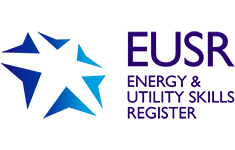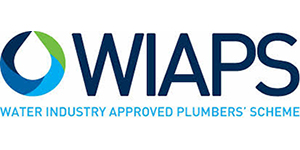In the UK, the term “moling” has gained considerable traction in the realm of underground utility installations. This innovative trenchless technology offers a seamless solution for installing underground pipes and cables, significantly reducing the need for extensive digging or trenching. For homeowners, businesses, and utility companies, moling represents a leap forward in efficiency and minimal disruption. This article delves into the intricacies of moling, its process, benefits, and applications.
What is Moling?
Moling is a method of installing underground utilities without the need for traditional trenching. It involves the use of a pneumatic device known as a mole, which creates a borehole through the ground. The mole compacts the soil around it, forming a tunnel through which pipes or cables can be pulled. This technology is especially useful for laying pipes under roads, driveways, and landscaped areas with minimal disturbance to the surface.
The Moling Process
The process of moling typically involves several key steps:
1. Preparation
The first step in the moling process is preparation. This involves identifying the starting and ending points of the installation. Small entry and exit pits are then dug at these locations. The size of these pits can vary depending on the diameter of the pipes or cables being installed, but they are generally kept as small as possible to minimise surface disruption.
2. Insertion
Once the entry and exit pits are prepared, the mole is inserted into the entry pit. The mole is a cylindrical, pneumatically-driven device designed to burrow through soil. It is connected to a compressor, which provides the necessary air pressure to propel the mole forward.
3. Boring
As the mole is driven forward, it compacts the soil around it, creating a borehole. The soil is displaced outward, forming a tunnel. This method of boring through the ground without removing soil is what sets moling apart from traditional trenching techniques.
4. Installation
After the borehole is completed, the next step is to pull the pipe or cable through the tunnel. This is typically done by attaching the pipe or cable to the mole and retracting it back through the borehole. The compacted soil around the tunnel provides support, ensuring that the borehole remains stable during and after installation.
5. Completion
Once the pipe or cable is in place, the entry and exit pits are filled in and restored to their original condition. This final step ensures that the surface is left relatively undisturbed, with minimal signs of the underground installation.
Benefits of Moling
Moling offers a range of benefits over traditional trenching methods, making it a preferred choice for many underground installations.
Minimal Surface Disruption
One of the most significant advantages of moling is the minimal disruption it causes to the surface. Traditional trenching requires extensive digging, which can damage driveways, roads, and landscaped areas. Moling, on the other hand, involves only small entry and exit pits, preserving the integrity of the surface.
Cost-Effective
Moling is generally more cost-effective than traditional trenching. The reduced need for extensive digging means less labour and lower costs for restoring the surface. Additionally, the efficiency of the moling process can lead to shorter project timelines, further reducing costs.
Environmentally Friendly
By reducing the amount of soil that needs to be excavated and displaced, moling is a more environmentally friendly option. It minimises the impact on the surrounding environment and reduces the amount of waste generated during the installation process.
Versatility
Moling is a versatile technique that can be used for a variety of underground installations. It is suitable for installing water pipes, gas lines, electrical cables, and telecommunications infrastructure. Its ability to navigate through different soil types and conditions makes it a reliable choice for many applications.
Reduced Disruption to Traffic
For installations under roads and driveways, moling offers the advantage of reduced disruption to traffic. Traditional trenching often requires road closures and significant traffic management, leading to inconvenience for road users. Moling, with its minimal surface disturbance, allows for installations to be carried out with less impact on traffic flow.
Applications of Moling
Moling has a wide range of applications in both residential and commercial settings. Its versatility and efficiency make it an ideal solution for various underground installations.
Residential Applications
In residential areas, moling is commonly used for installing and repairing utility connections. This includes water supply lines, gas pipes, and electrical cables. Homeowners appreciate the minimal disruption to their gardens, driveways, and pathways, making moling a preferred choice for underground installations.
Commercial and Industrial Applications
In commercial and industrial settings, moling is used for a variety of purposes, including the installation of utility services to new buildings, upgrades to existing infrastructure, and repairs to damaged pipes and cables. The efficiency and cost-effectiveness of moling make it an attractive option for businesses looking to minimise downtime and disruption.
Infrastructure Projects
Moling is also utilised in larger infrastructure projects, such as the installation of telecommunications networks and the expansion of water and gas distribution systems. Its ability to create boreholes over long distances and through challenging soil conditions makes it a valuable tool for large-scale projects.
Conclusion
Moling represents a significant advancement in the field of underground utility installations. Its trenchless technology offers numerous benefits, including minimal surface disruption, cost-effectiveness, and environmental friendliness. With its versatility and efficiency, moling is set to play a crucial role in the future of underground infrastructure development. Whether for residential, commercial, or industrial applications, moling provides a reliable and efficient solution for a wide range of underground installations.







